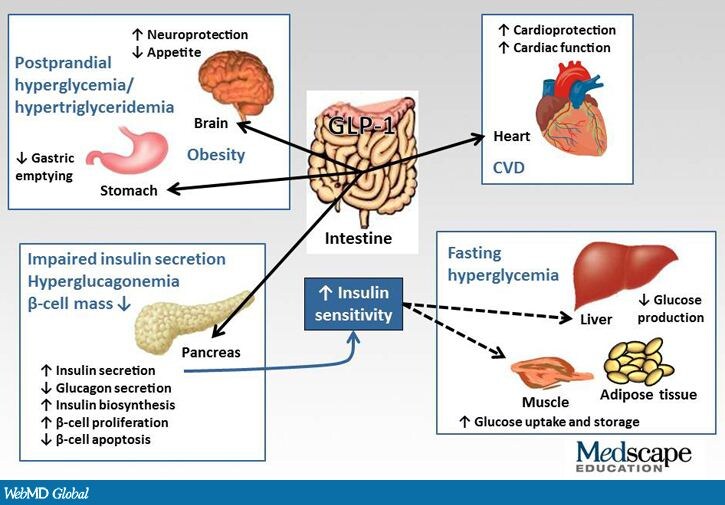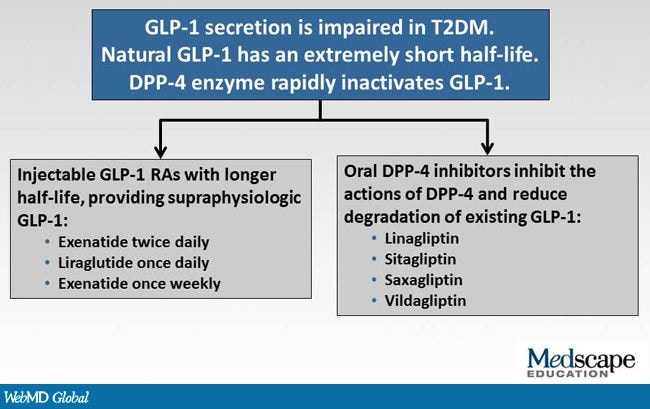

Several antihyperglycemic agents have been developed in order to address some of the challenges associated with older agents. Incretin-based therapies emerged in the past decade and have become established as important treatment options for patients with T2DM. Two classes of agents are available: (1) DPP-4 inhibitors, which are administered orally and include sitagliptin, saxagliptin, vildagliptin, and linagliptin; and (2) GLP-1 RAs, which are administered subcutaneously and include exenatide twice-daily, exenatide once-weekly, and liraglutide.
Sodium glucose cotransporter 1 and 2 inhibitors are another class of novel antihyperglycemic agents. They inhibit glucose reabsorption from renal tubules and cause glucosuria, and sodium glucose cotransporter 1 inhibitors also lead to reduced uptake of glucose from the small intestine. Numerous sodium glucose cotransporter 2 inhibitors are undergoing preclinical and clinical trials, with dapagliflozin having completed phase 3 trials. It has been shown to reduce A1c, reduce blood glucose levels, and is associated with weight loss.
No comments:
Post a Comment